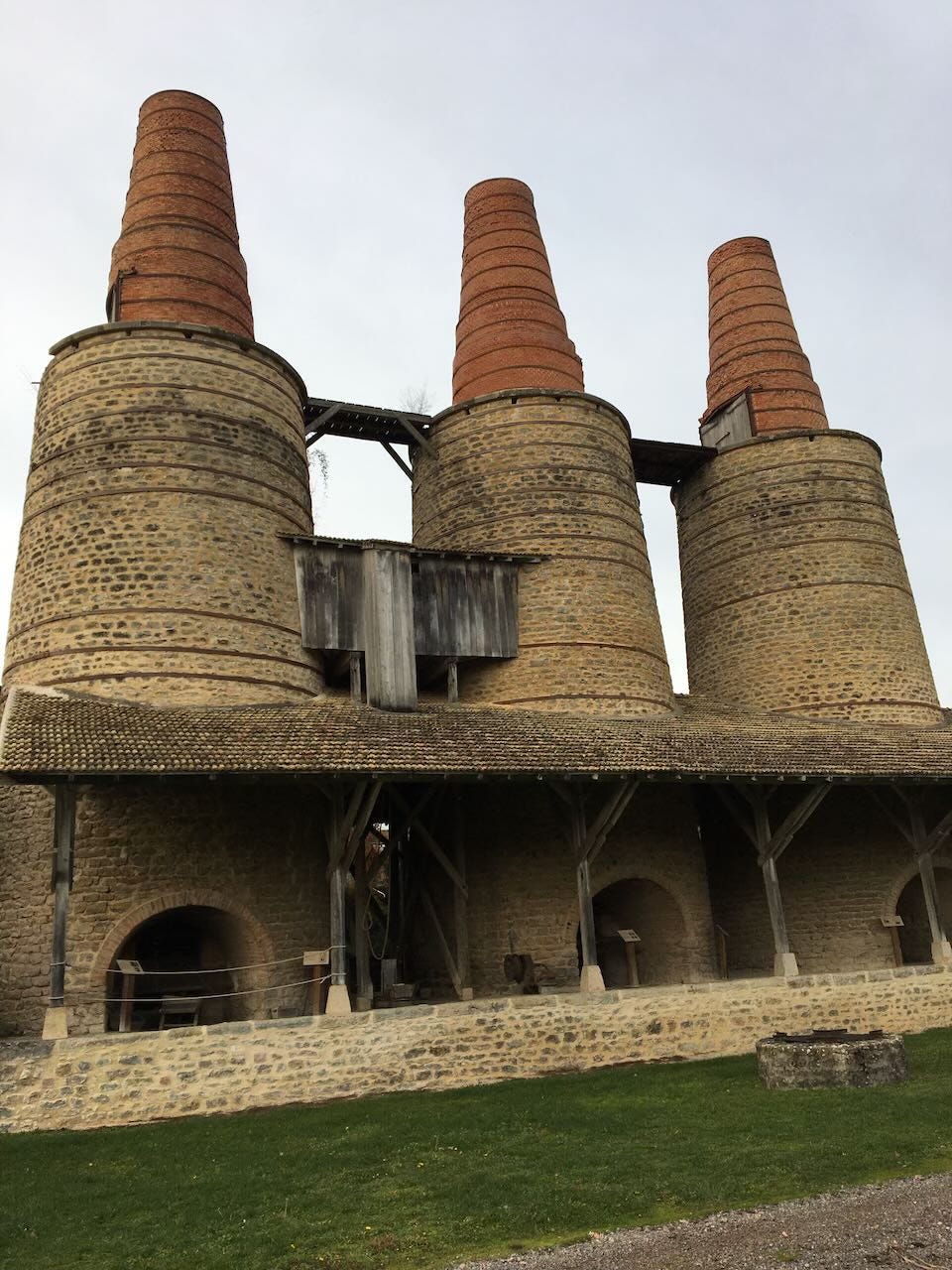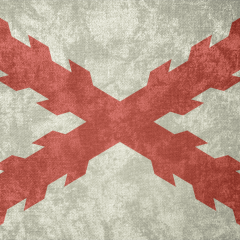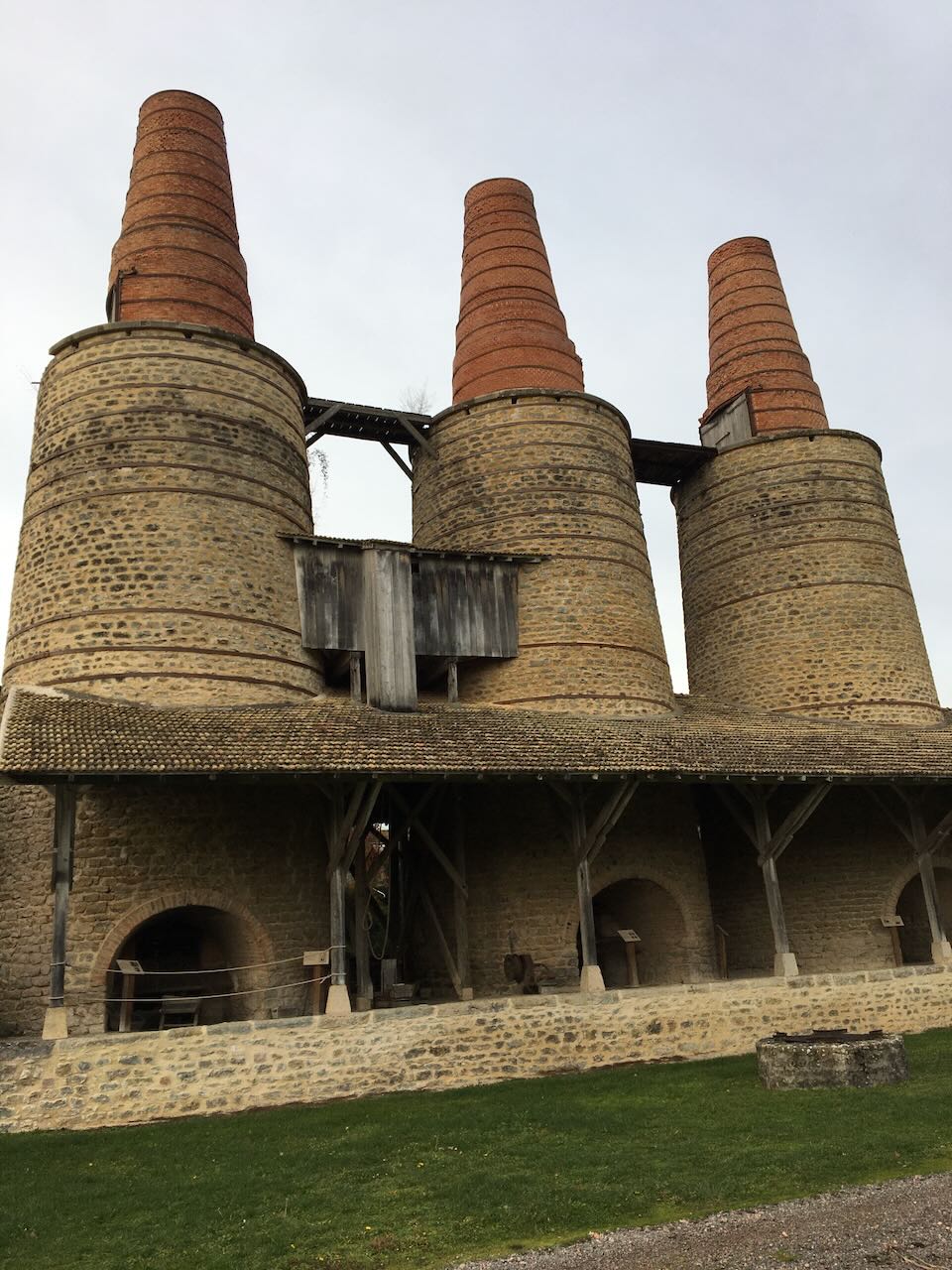Green, yellow and pink. The colors of the Charolais countryside are ‘other side of the rainbow’ technicolor contrasts after the cement and tarmac gray of Lyon in March. The green is so lush and bright that it has a hyperreal quality as the sun courses across crisp, clean blue skies and appears to welcome us back to the country. We welcomed visitors from Brooklyn who had spent some fun but rainy days in Paris, before the TGV delivered them into the underappreciated former industrial belly of Burgundy at Le Creusot. We had plans for an indulgent culinary tour of our part of France, a bit of a blow out, a ‘bonne bouffe’.
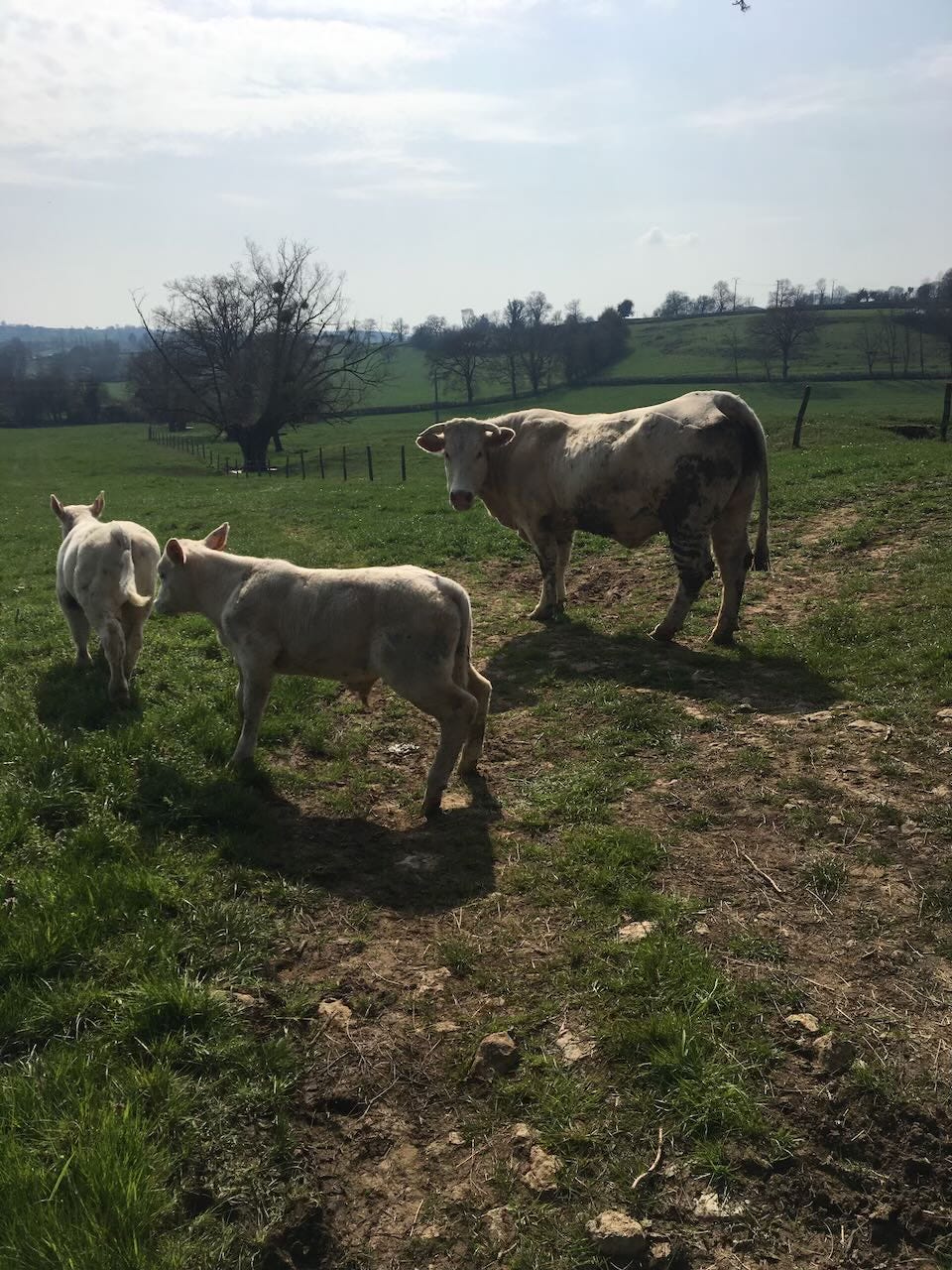
As we headed south into the Charolais the weather smiled on us, and we were greeted on either side by the white cows of the local breed, nuzzling their way through the pasture in their small hedge rowed fields. As you get further south into the more hilly and higher elevations of the Brionnais, its sister breeding ground of the Charolais beef cattle, the fields are edged by dry stone walls that are familiar to anyone from rural England. The fields are small to allow simple rotation, avoiding over grazing, the walls provide shelter from the wind in winter. They are too small and uneven to be used for arable crops at scale, so we are spared the pesticide induced monocultures of the north of France. We benefit instead from lots of butterflies, bugs and crawling things and all the birds and small animals that feed on them, and the larger birds of prey and larger animals that feed on them in turn. The forested parts are full of large wild boar and to a lesser extent deer, which keep the local hunters busy every winter weekend and provide a steady supply of ‘saucisson de sanglier’, dried wild boar sausage, to the local shops. They -reintroduced wolves to the Morvan, a forested mountainous plateau 45 kilometers to the north of us, Romanian wild wolves. Much to the annoyance of the local sheep farmers, the wolves will do their wolf-thing regardless of man-designated borders and fancy lamb in their diet from time to time. The protests of the farmers are smoothed away with cash payments for lost livestock at market pricing, quietly and quickly, like a wolf in the night the problem comes, and the problem goes away.
Our grand bouffe took place on March 14th which was the feast day of St Mathilda. Unlike many of the saints who followed a path of denial and simple life, our Mathilda was a Saxon Queen and was used to feasts and wine. She was the first of what are referred to as the Ottonian Queens, she gave birth to the first King Otto, who then had more descendants all named Otto. Her lad Otto is ‘important’ as he restored the Holy Roman Empire. Charolles ended up being an island of the Holy Roman Empire, part of the Dukes of Burgundy’s lands and the seat of Charles Le Temeraire. Charles’ father Philip the Good was the most powerful of the Dukes of Burgundy and responsible for the creation of the united low countries of what is today Holland and Belgium. His troops captured Joan of Arc at Compiegne, and he handed her over to the English, who with the help of Burgundian judges burnt her for heresy. Phil was a bit of a player, he married three times and had three legitimate sons, all from his third marriage; only one, Charles the Bold, reached adulthood. Philip had 24 documented mistresses and fathered at least 18 illegitimate children, who are bluntly called things like “Anthony, bastard of Burgundy, Count of la Roche” or “Philip, bastard of Burgundy, Bishop of Utrecht”. Anyway, Mathilda was a good wife herself and gave birth to two other boys and 2 girls, as well as Otto. When her hubbie, Henry of Saxony, shuffled off from his mortal coil, she used her not insignificant wealth to set up convents. Not a great number, just 3 and they tended to be finishing schools for the daughters of powerful families, so once again hardly a path to beatitude through pain and suffering. It seems it was easier to become sainted in 968, when Mathilda died, than later, or they tightened up the rules to make it a more exclusive club.
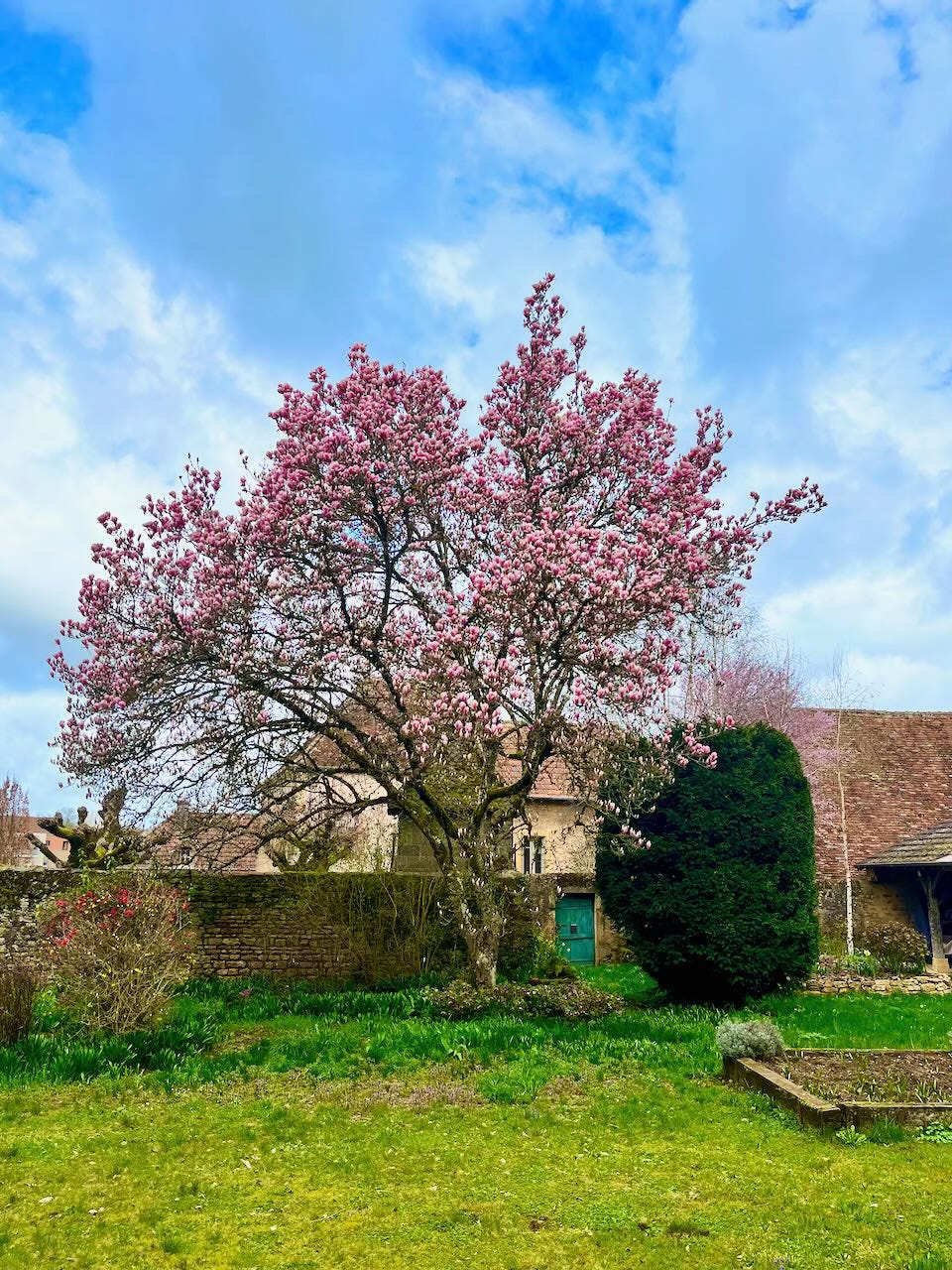
The daffodils are out, as is the forsythia, bright shards of yellow catching the eye as you walk the lanes. We have a grand old magnolia tree in the garden, and it was just breaking into its pinkness when our visitors were here, but today it’s barbie-ing out. In two days it completely opened up, partly as those two days were warm and bright in a way that they should not be, in mid-March.
As it mentally to me was still winter, we planned the local delicacy, Boeuf Bourguinon. It’s an easy dish to cook in advance, so I would not be faffing around while we were all chatting and enjoying drinks. In such a beef area you simply ask the butcher for ‘Bourguignon’, he then asks how many people and whether you want it ‘gelatinous’ or not? That would not translate well into English, as we have terrible memories of gristly meat, especially from school dinners. I asked for ‘half-and-half’, M. Jardin, the butcher, then cut the chunks off the piece of beef in the right size. If the beef is well browned, and you cook it in the wine for a long slow time, the gelatin dissolves completely to help make the liquor with the onions and mushrooms gloriously unctuous. I had the luxury of cooking it slowly most of the day, then letting it sit for a couple of hours before rewarming to serve. It was to be served with a simple Baker’s Potatoes, ‘Pomme de Terre Boulangère’, another easy comfort food dish that cooks quietly while you do more fun things, like snacking on foie gras on brioche and a glass of 2012 Monbazillac. I did manage to get distracted enough making the starter that I burned the first few slices of brioche in the toaster, even at a setting of 1 it has so much butter in it that it needs a constant eye and attention, not one of my strong suits, especially if talking. I was all for scraping off the burnt bits with a knife, but that was universally rejected as too English, 1960’s post-rationing thinking.
Eating salad as a starter rather than an accompaniment or later palate cleanser is a very American habit, but in my defense the local Mich 1* place is now serving ‘Salade Hivernale’ as an Entré, so if it’s good enough for Maitre Frederic Doucet, it’s good enough for me. The pears and walnuts are at the end of their season, but they nuzzled companionably with the mid-winter mâche (or Lamb’s Lettuce, as it’s known in England, although I have never seen it in the US on either coast), pea shoots and a local hard goat cheese, Pyramide d’Argolay. I am a massive fan of Alsace Gewurtztraminer wines, when they are dry and balanced they are the perfect accompaniment to this green mix of flavors and textures, the hint of sweetness within the dry backbone of the wine stands up to the Banyuls vinegar in the dressing. We had a cheering 2019 Wolfberger Gewürztraminer Hatschbourg. It’s not particularly expensive or a ‘grand vin’, Wolfberger is the local cooperative wine making organization for the picture-postcard village of Eguisheim in the Alsace, just outside Colmar. We visited in 2022 and picked up half a case of this Gewurtz and a full case of covid while we were there.
We washed the beef down with Givry Premier Cru. That is the closest, most serious Burgundy to us. I bought this from the winery of J.P. Berthenet, a friendly family winery tucked away on the hillside of the village of Montagny. You could drink his Montagny as an easy-going weekend burgundy, but his Givry is great and has a bit more elegance. This was a 2018, it had a bit of bottle age but was still relatively fruit forward, perfect for the richness of the Bourguinon. We also had a 2020 Clos de la Servoisine, Givry 1e Cru from Deliance Freres, less mature and tighter, but it helped keep the conversation flowing through to the cheese course. We had some local Charolais ‘mi-fraiche’ goat cheese, a local Palet de Vache, a serious Maroilles from Lille that had the fridge stinking for a week and a big hit with the crowd, Shropshire Blue.
The meal ended with a pear tart from the local bakery Boulangerie L’Éclair-cie. Like many of the bakers in town, his bread is very good if uninspiring in its selection, but that is down to local tastes. Where he does stand out is his pie crust, that crunchy butter texture comes from a really hot oven and great technique. We had a smashing time, as you can probably guess.
As can be expected, we had a slow, lazy start to the next day and blew out the cobwebs with a walk along the former disused rail line to the local Fours à Chaux, what look like a castle for gnomes but are actually lime kilns. The little white calves of the Charolais which we hoped to find foraging in the fields either side were absent, probably rotated off somewhere else, so the promised close up photo ops were not delivered, but perhaps after indulging in beef the previous evening that was a welcome mental degree of dissociation.
